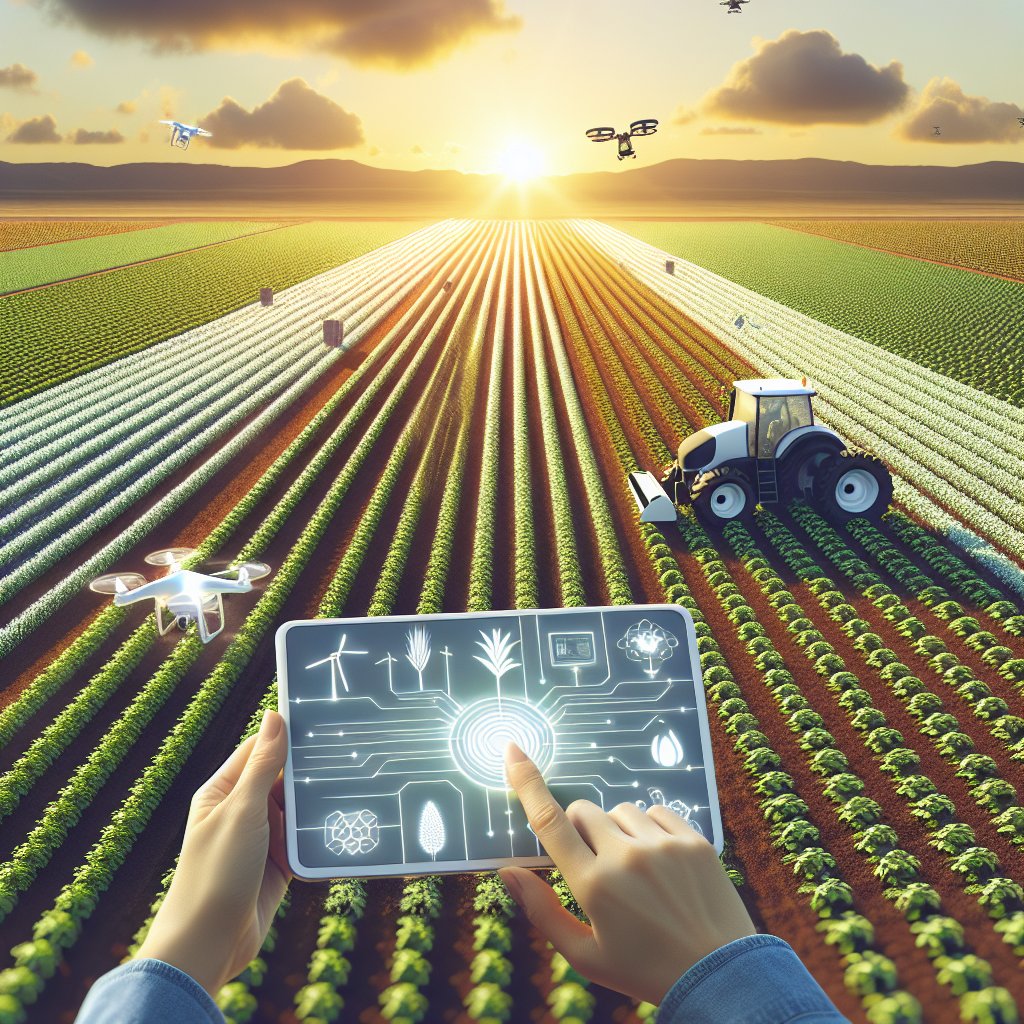The use of artificial intelligence (AI) in agriculture and farming is revolutionizing the way we grow and produce food. AI-driven solutions have the potential to increase efficiency, reduce waste, and improve sustainability in the agricultural sector. From precision farming to crop monitoring, AI technologies are helping farmers make better decisions and optimize their operations. In this article, we will explore the potential of AI-driven solutions in agriculture and farming and how they are shaping the future of food production.
Benefits of AI in Agriculture
There are numerous benefits to using AI in agriculture. Some of the key advantages include:
1. Increased Efficiency: AI-driven solutions can help farmers optimize their operations by providing real-time data and insights. This can help farmers make better decisions about planting, irrigation, and harvesting, leading to increased productivity and higher yields.
2. Reduced Waste: By using AI to monitor crops and detect diseases or pests early, farmers can take proactive measures to prevent losses. This can help reduce waste and improve the overall quality of the crop.
3. Sustainability: AI technologies can help farmers reduce their environmental impact by optimizing resource use and reducing the use of pesticides and fertilizers. This can lead to more sustainable farming practices and healthier ecosystems.
4. Improved Decision-Making: AI can analyze large amounts of data quickly and accurately, helping farmers make better decisions about when to plant, irrigate, and harvest crops. This can lead to higher profits and better outcomes for farmers.
AI Applications in Agriculture
There are a wide range of AI applications in agriculture, including:
1. Precision Farming: AI technologies can help farmers optimize their use of resources such as water, fertilizers, and pesticides. By analyzing data from sensors and drones, AI can help farmers make more precise decisions about when and where to apply these inputs.
2. Crop Monitoring: AI can help farmers monitor the health of their crops by analyzing images and data collected from drones or satellites. This can help farmers detect diseases, pests, and nutrient deficiencies early, allowing them to take action before it’s too late.
3. Harvesting Robots: AI-driven robots can help farmers automate the harvesting process, reducing the need for manual labor and increasing efficiency. These robots can be programmed to pick fruits and vegetables at the optimal time, leading to higher yields and better quality produce.
4. Predictive Analytics: AI can analyze historical data and weather patterns to predict future crop yields and market prices. This can help farmers make better decisions about what to plant and when to sell their crops, maximizing profits and reducing risks.
Challenges and Considerations
While the potential of AI in agriculture is vast, there are also challenges and considerations that need to be addressed. Some of the key challenges include:
1. Data Privacy and Security: As AI technologies rely on large amounts of data, ensuring the privacy and security of this data is crucial. Farmers need to be aware of the risks associated with sharing their data and take steps to protect it.
2. Cost: Implementing AI technologies can be expensive, especially for small-scale farmers. It’s important to consider the costs and benefits of using AI in agriculture and determine if the investment is worth it.
3. Skills and Training: Farmers need to be trained to use AI technologies effectively. Providing education and support to farmers can help them maximize the benefits of AI in agriculture.
4. Regulation: As AI technologies become more widespread in agriculture, there is a need for regulations to ensure their safe and ethical use. Governments and policymakers need to develop guidelines and standards for the use of AI in agriculture.
Frequently Asked Questions
1. How can AI help farmers improve crop yields?
AI can help farmers improve crop yields by providing real-time data and insights on factors such as soil health, water availability, and pest infestations. By analyzing this data, farmers can make better decisions about when to plant, irrigate, and harvest crops, leading to higher yields.
2. What are the benefits of using AI in precision farming?
Precision farming involves using AI technologies to optimize the use of resources such as water, fertilizers, and pesticides. By analyzing data from sensors and drones, AI can help farmers make more precise decisions about when and where to apply these inputs, leading to increased efficiency and reduced waste.
3. How can AI help farmers reduce their environmental impact?
AI technologies can help farmers reduce their environmental impact by optimizing resource use and reducing the use of pesticides and fertilizers. By analyzing data on soil health, weather patterns, and crop health, AI can help farmers make more sustainable decisions about farming practices.
4. What are some of the challenges of implementing AI in agriculture?
Some of the key challenges of implementing AI in agriculture include data privacy and security, cost, skills and training, and regulation. Farmers need to be aware of these challenges and take steps to address them in order to maximize the benefits of AI in agriculture.
In conclusion, the potential of AI-driven solutions in agriculture and farming is vast. From precision farming to crop monitoring, AI technologies are helping farmers make better decisions and optimize their operations. By addressing challenges and considerations such as data privacy, cost, skills, and regulation, we can unlock the full potential of AI in agriculture and shape a more sustainable and efficient future for food production.

